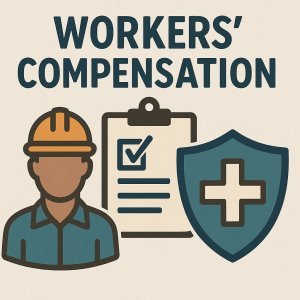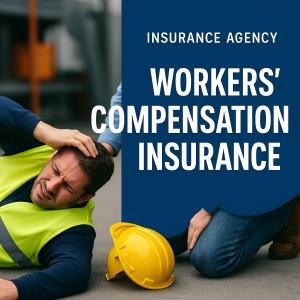
Workers Comp for Continuous Manufacturing: 24/7 Safety Strategies
August 27, 2025
Seven Common Security Guard Injuries in Georgia and How to Prevent Claims
August 27, 2025In the demanding field of high-risk security guard operations, workplace injuries are an unfortunate but prevalent reality. Navigating the complexities of workers’ compensation claims in such high-stakes environments requires more then just standard procedures; it calls for informed strategies that ensure both protection and compliance. This article explores proven approaches for security professionals and employers alike to successfully secure workers’ comp approval, minimizing disruptions and safeguarding the welfare of thier workforce. By understanding the unique challenges inherent in high-risk roles, stakeholders can implement best practices that prioritize employee safety while streamlining claims processes in this critical sector.
Table of Contents
- Understanding the Challenges of High-Risk Security Guard Operations and Injuries
- Key Documentation and Evidence for Strengthening Workers’ Compensation Claims
- Implementing Effective Safety Protocols to Minimize Risk and Expedite Approval
- Collaborating with Legal Experts and Medical professionals for Successful Claims
- Q&A
- To Wrap it Up
Understanding the challenges of high-Risk Security guard Operations and Injuries
Security guards working in high-risk environments encounter an array of challenges that amplify the likelihood of injury and complicate claims processes. Their roles frequently enough demand vigilant protection in volatile settings such as construction sites, nightlife venues, or areas with high criminal activity. These conditions expose them to risks including physical assault, slips and falls, and repetitive strain injuries.Compounding these dangers are factors like extended shifts, inadequate protective equipment, and unpredictable incidents, all of which significantly increase the risk profile and the complexity of workers’ compensation claims.
To effectively address these challenges, it’s essential to recognize the core obstacles that impact workers’ comp approval:
- Lack of clear injury documentation: Detailed incident reports are vital for substantiating claims.
- Delayed medical attention: Immediate evaluation and treatment can prevent complications and establish claim validity.
- Employer pushback: High-risk roles may face skepticism around injury legitimacy, making solid proof crucial.
- Complex injury types: Psychological trauma and cumulative injuries require specialized claim approaches.
| Risk Factor | Common injury | Complication in Claim |
|---|---|---|
| Physical Assault | Concussion, Bruising | Proving the incident location and time |
| Slips and Falls | Fractures, Sprains | disputes over workplace safety compliance |
| Repetitive Strain | Tendonitis, Carpal Tunnel | Establishing work-related cause over personal activity |
Key Documentation and Evidence for Strengthening Workers’ Compensation Claims
To robustly support a workers’ compensation claim, securing meticulous documentation is paramount.Begin with complete medical records that detail initial injury assessments, ongoing treatments, and expert opinions on work-related causality. Additionally, incident reports prepared immediately after the event serve as crucial evidence, offering a firsthand account of circumstances and potential hazards involved.Equally significant are witness statements that corroborate the facts, elucidate the claimant’s work conditions, and strengthen the authenticity of the claim.
Employers and claimants alike should maintain organized records of work schedules, training certifications, and safety protocol adherence to demonstrate due diligence and illustrate the high-risk habitat security guards operate within. Below is a snapshot of essential documentation components that can significantly impact claim outcomes:
| Documentation Type | Purpose | Key Considerations |
|---|---|---|
| Medical Records | Verify injury and treatment progression | Consistency and detailed provider notes |
| Incident Reports | Establish facts and timelines | Prompt reporting and thoroughness |
| Witness Statements | Support claimant’s account of events | Credibility and detail |
| Employment Records | Confirm job duties and risk exposure | Accuracy and comprehensive job descriptions |
| Training Certifications | Prove competence and safety compliance | Up-to-date and relevant to security tasks |
Implementing Effective Safety Protocols to Minimize Risk and Expedite Approval
Creating a robust framework of safety measures is paramount in high-risk security guard operations, not only to protect personnel but also to streamline the workers’ compensation approval process. Implementing comprehensive training programs tailored to specific job hazards equips guards with the knowledge and skills necessary to anticipate and avoid potential dangers. Regularly updating these protocols in response to evolving threats ensures that safety practices remain relevant and effective. Additionally, fostering a culture of accountability and open communication encourages proactive incident reporting, which is critical for timely workers’ comp claim processing.
Key components that contribute to minimizing risk and facilitating swift approvals include:
- Pre-shift safety briefings: reviewing daily hazards and operational changes.
- Personal protective equipment (PPE): ensuring proper usage and maintenance.
- incident documentation standards: detailed and consistent record-keeping for all workplace events.
- Risk assessment checklists: systematic identification and mitigation of site-specific threats.
| Safety Protocol | Benefit |
|---|---|
| ongoing Hazard Training | Reduced on-site incidents |
| Routine Equipment Inspections | Minimized equipment failure risks |
| Clear Incident Reporting Process | Faster and accurate claims processing |
| Safety Compliance Audits | Ensured regulatory adherence |
Collaborating with Legal Experts and Medical Professionals for successful Claims
Securing workers’ compensation approval in high-risk security guard operations requires more than just documenting injuries; it demands a strategic partnership between seasoned legal experts and experienced medical professionals. Legal advisors well-versed in workers’ comp laws can meticulously navigate claim submissions, ensuring compliance with all regulatory requirements while anticipating potential disputes. Simultaneously, medical professionals play a pivotal role by providing detailed, credible injury assessments and treatment records that substantiate the guard’s claim. Together, these experts build an irrefutable case that highlights both the legitimacy and extent of workplace injuries.
Successful claims frequently enough depend on clear communication and collaborative documentation. Key practices include:
- Comprehensive Medical Evaluations: Detailed reports emphasizing the injury’s impact on work duties and daily life.
- Legal Strategy Development: Tailored approaches addressing unique challenges specific to security operations.
- Regular Interdisciplinary Consultations: Ongoing dialog between attorneys and healthcare providers to adjust strategies as cases evolve.
- Thorough Evidence Collection: Combining medical records, incident reports, and workplace safety logs for a robust claim file.
| Expert Role | Critical Contribution |
|---|---|
| Legal Counsel | Claims navigation and dispute resolution |
| Medical Professionals | Injury documentation and prognosis |
| Security Managers | Incident context and workplace safety insight |
Q&A
Q&A: high-Risk Security Guard Operations – Winning Strategies for Workers’ Comp Approval
Q1: What constitutes high-risk security guard operations?
A1: High-risk security guard operations typically involve environments with elevated threats, such as armed protection, event security in volatile settings, construction sites, industrial facilities, and locations prone to violence or hazardous conditions. These settings increase the likelihood of injury or illness, necessitating specialized safety protocols and workers’ compensation considerations.Q2: Why is workers’ compensation approval particularly challenging for high-risk security guards?
A2: High-risk security guards often face complex injury claims due to the physical and situational hazards inherent in their roles. Employers and insurers may scrutinize claims more rigorously to validate the legitimacy and causation of injuries. Additionally, disputes can arise over whether injuries occurred in the line of duty or were pre-existing, making approval processes more stringent.
Q3: What strategies can security firms employ to improve workers’ comp claim approval rates?
A3: Effective strategies include comprehensive documentation of incidents, prompt reporting, thorough incident investigations, and clear communication between injured workers, supervisors, and insurers. Implementing rigorous safety training programs tailored to high-risk environments also demonstrates proactive risk management, supporting claims validity.
Q4: How critically important is documentation in securing workers’ compensation for high-risk security guards?
A4: Documentation is critical. Detailed reports-including incident descriptions, witness statements, medical records, and video evidence-strengthen claim integrity. accurate and timely record-keeping not only expedites the approval process but also reduces the likelihood of disputes or denials.
Q5: What role does medical evaluation play in workers’ comp approval for injured security guards?
A5: Medical evaluation is essential in establishing the causal link between the injury and job duties. Autonomous medical examinations (IMEs) and consistent follow-up care provide objective evidence of injury severity and work-relatedness, which are pivotal for claim acceptance and appropriate benefit allocation.
Q6: Can preventive measures impact workers’ compensation outcomes?
A6: Yes, prevention is a powerful factor. Employers who invest in hazard assessments, protective equipment, ergonomic improvements, and employee wellness can reduce injury rates. Demonstrating a commitment to safety can favorably influence insurers’ perspectives and support smoother claims processing.
Q7: How can training be optimized for high-risk security personnel regarding workers’ comp considerations?
A7: Training should encompass not only operational hazards but also emphasize proper reporting procedures, injury recognition, and post-incident protocols. Educating guards on their rights and responsibilities concerning workers’ compensation ensures timely and accurate claim submission.
Q8: What are common pitfalls that can delay or jeopardize workers’ comp approval?
A8: Common issues include delayed injury reporting, inconsistent statements, insufficient medical documentation, lack of supervisory oversight, and inadequate injury examination. Additionally, failure to follow prescribed safety guidelines can lead insurers to question claim legitimacy.
Q9: How can legal and HR teams support winning strategies for workers’ comp in high-risk security settings?
A9: Legal and HR professionals can facilitate compliance with regulatory requirements, oversee thorough documentation, and ensure fair handling of claims. They play a critical role in educating management on best practices, coordinating with medical providers, and defending legitimate claims during disputes.
Q10: What is the long-term business impact of effective workers’ comp management in high-risk security operations?
A10: Efficient workers’ comp management reduces costs associated with litigation, payouts, and lost productivity. It improves morale and retention by fostering a culture of care and accountability, enhances the company’s reputation for safety, and ultimately contributes to operational resilience and profitability.
This Q&A aims to provide security firm leadership and risk managers with actionable insights to enhance workers’ compensation approval success in challenging high-risk environments.
To Wrap It Up
In navigating the complexities of high-risk security guard operations, securing workers’ compensation approval requires a strategic and informed approach. By understanding the specific risks involved, maintaining rigorous documentation, adhering to safety protocols, and engaging proactively with claims processes, security professionals can significantly improve their chances of approval while safeguarding their well-being. Employing these winning strategies not only protects the workforce but also reinforces the operational integrity and reputation of security firms operating in challenging environments. Ultimately, a proactive, disciplined approach is essential for managing high-risk exposures and ensuring that workers receive the support and compensation they rightfully deserve.
“This content was generated with the assistance of artificial intelligence. While we strive for accuracy, AI-generated content may not always reflect the most current information or professional advice. Users are encouraged to independently verify critical information and, where appropriate, consult with qualified professionals, lawyers, state statutes and regulations & NCCI rules & manuals before making decisions based on this content.







